Plateaus
A plateau is a flat, elevated landform that rises sharply above the surrounding area on at least one side. It is often bounded by steep cliffs or slopes and can be found on every continent. Plateaus can be formed by various geological processes and can vary in size from small and isolated to vast and expansive.
Formation of Plateaus
There are several processes that can lead to the formation of plateaus:
- Volcanic Activity: Some plateaus are formed by layers of solidified lava from volcanic eruptions. Over time, these layers build up to create a flat-topped landform.
- Erosion: Plateaus can also be formed by the erosion of surrounding areas, leaving behind a raised, flat surface. This can occur through the action of wind, water, or ice over millions of years.
- Tectonic Uplift: The movement of tectonic plates can cause the land to uplift and form a plateau. This process is often accompanied by the folding and faulting of the Earth's crust.
Features of Plateaus
Plateaus can exhibit a variety of features, including:
- Steep Escarpments: The edges of a plateau are often marked by steep cliffs or escarpments that separate the elevated surface from the lower surrounding area.
- Flat Summit: The top of a plateau is generally flat and can be used for agricultural purposes or as a natural habitat for wildlife.
- Intersecting Rivers: Many plateaus are intersected by rivers, which have carved deep gorges and canyons into the plateau's surface over time.
Importance of Plateaus
Plateaus play a significant role in shaping the Earth's landscape and have several important functions:
- Water Catchment: Plateaus often act as natural water catchment areas, collecting and storing water that can be used for irrigation and human consumption.
- Biodiversity: The unique environmental conditions of plateaus support diverse ecosystems and provide habitats for a wide range of plant and animal species.
- Geological Resources: Many plateaus contain valuable geological resources such as minerals, ores, and fossil fuels, which are essential for human development.
Study Guide
Here are some key points to remember about plateaus:
- Plateaus are elevated landforms with a flat top and steep sides.
- They can be formed by volcanic activity, erosion, or tectonic uplift.
- Plateaus have important functions, including water catchment, biodiversity support, and geological resource storage.
Use the study guide to review the main concepts and make sure to understand the formation and importance of plateaus.
[Plateaus] Related Worksheets and Study Guides:
.◂Science Worksheets and Study Guides Third Grade. Hands-on Lab Skills/Science Inquiry - 3rd grade
Study Guide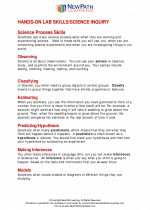 Hands-on Lab Skills/Science Inquiry - 3rd grade
Hands-on Lab Skills/Science Inquiry - 3rd grade  Worksheet/Answer key
Worksheet/Answer key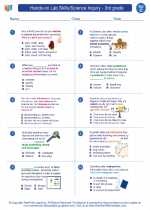 Hands-on Lab Skills/Science Inquiry - 3rd grade
Hands-on Lab Skills/Science Inquiry - 3rd grade  Worksheet/Answer key
Worksheet/Answer key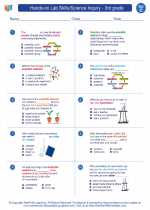 Hands-on Lab Skills/Science Inquiry - 3rd grade
Hands-on Lab Skills/Science Inquiry - 3rd grade  Worksheet/Answer key
Worksheet/Answer key Hands-on Lab Skills/Science Inquiry - 3rd grade
Hands-on Lab Skills/Science Inquiry - 3rd grade  Worksheet/Answer key
Worksheet/Answer key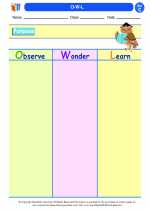 O-W-L
O-W-L  Vocabulary/Answer key
Vocabulary/Answer key Hands-on Lab Skills/Science Inquiry - 3rd grade
Hands-on Lab Skills/Science Inquiry - 3rd grade  Vocabulary/Answer key
Vocabulary/Answer key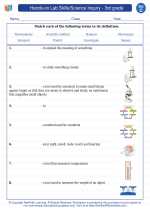 Hands-on Lab Skills/Science Inquiry - 3rd grade
Hands-on Lab Skills/Science Inquiry - 3rd grade 

 Worksheet/Answer key
Worksheet/Answer key
 Worksheet/Answer key
Worksheet/Answer key
 Worksheet/Answer key
Worksheet/Answer key
 Worksheet/Answer key
Worksheet/Answer key
 Vocabulary/Answer key
Vocabulary/Answer key
 Vocabulary/Answer key
Vocabulary/Answer key

The resources above cover the following skills:
Science as Inquiry and Process: A student should understand and be able to apply the processes and applications of scientific inquiry. A student who meets the content standard should:
Develop an understanding of the processes of science used to investigate problems, design and conduct repeatable scientific investigations, and defend scientific arguments.